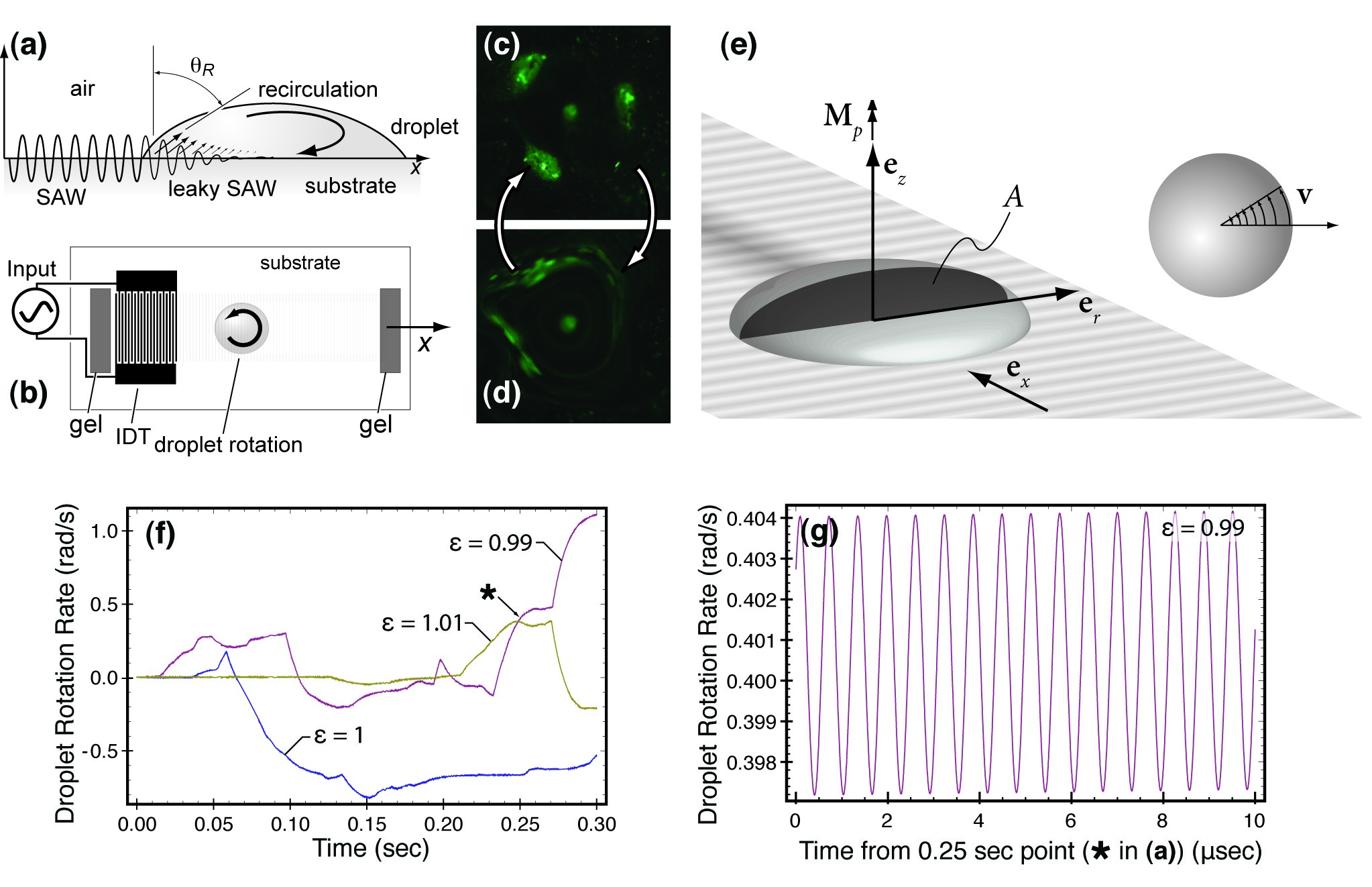186aq Chaotic Particle Transport Phenomena In Mhz-Order Surface Vibration Driven Sessile Drops
A rapid particle concentration method in sessile droplets and confined fluid chambers has been developed, using MHz-order traveling wave vibrations propagating across the surface of a piezoelectric substrate. Upon encountering a sessile droplet set atop the substrate, the waves diffract into the droplet and generate a combination of forces upon suspended particles and the fluid droplet itself to drive controllable and rapid collection or dispersion of the particles, far faster than other currently available methods known to the authors due to the large convective velocities achieved using the device. Though the fluid mechanics which drive the particle motion in the concentration process appears to be understood, the mechanism causing wholesale rotation of the droplet, complex vortex formation and breakup, and chaotic pattern formation when exposed to symmetrically imparted, high-frequency (>10 MHz) vibrations (a,b) remains unexplained. Further, several transition regions exist with respect to input power, from local particle collection at <1 mW, particle collection and dispersion blinking phenomena (c,d) at intermediate (1-5 mW) power, to complete particle collection toward the center of the droplet at high (>5 mW) power, evidently representing a Hopf bifurcation with O(2) symmetry. Here we provide experimental evidence of the observed phenomena together with a relatively simple model (e) of the acoustic irradiation of the fluid and particles. The model exhibits rapid and chaotic rotation of the droplet in a manner similar (f,g) to what has been observed experimentally; its simplicity draws upon Chelomei's results in studying direct fast harmonic excitation of nonlinear responses. With this model we demonstrate why such phenomena appear and discuss means to control them.

Web Page: mnrl.monash.edu.au